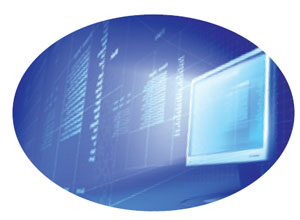SCM Application Scorecards: Most supply chain software vendors now have the capability, often sold as a separate product, to provide reporting tools or “scorecards” that provide detailed reporting on the data contained within the application, such as transportation reporting and analytics as part of a Transportation Management System. Today, they can also often incorporate external data as well as the data from the base applications. These application-specific scorecards often leverage one of the general business intelligence tools defined above to deliver a solution tied to the data that the supply chain software application manages.
 Supply Chain Visibility Systems: As performance management goes more real-time, solutions that provide real-time visibility to key supply chain objects and events (orders, shipments, inventory, etc.) are an increasingly important component of supply chain performance management. Supply Chain Visibility Systems: As performance management goes more real-time, solutions that provide real-time visibility to key supply chain objects and events (orders, shipments, inventory, etc.) are an increasingly important component of supply chain performance management.
Web Portals: Both within and outside the enterprise, metrics are increasingly delivered via web tools. Web portal applications can be independent tools that provide a framework for the metrics produce by another system, or the vendor’s scorecard system itself can contain a portal capability.
Dashboards: Scorecards measure performance in a historic sense – what has happened in the past, even if the past is just last week, or even yesterday. Dashboards, on the other hand, are forward looking and measure what is happening right now. They are visibility-based tools that help supply chain managers and executives make near real-time decisions, and react to exceptions and problems.
Event Management Systems: In general, event management systems (EMS) look for anomalies or exceptions in supply performance or execution and send “alerts” to designated respondents via a flexible variety of media (email, cell phone, etc.). While once thought to be a separate category, in general today, EMS capabilities are built into scorecards and dashboards, and are capable of, for example, sending an alert when a key metric has reached a defined tolerance or is trending negative (e.g., manufacturing yield is declining), or to alert a manager if there are problems in execution (e.g., the common example of the inbound shipment that will be late). There are thousands of other examples, such as flagging a demand planner forecast that deviates more than a given percent from the forecasting system baseline forecast.
Nearly every company will need a variety of these components or capabilities to build a comprehensive system.
|